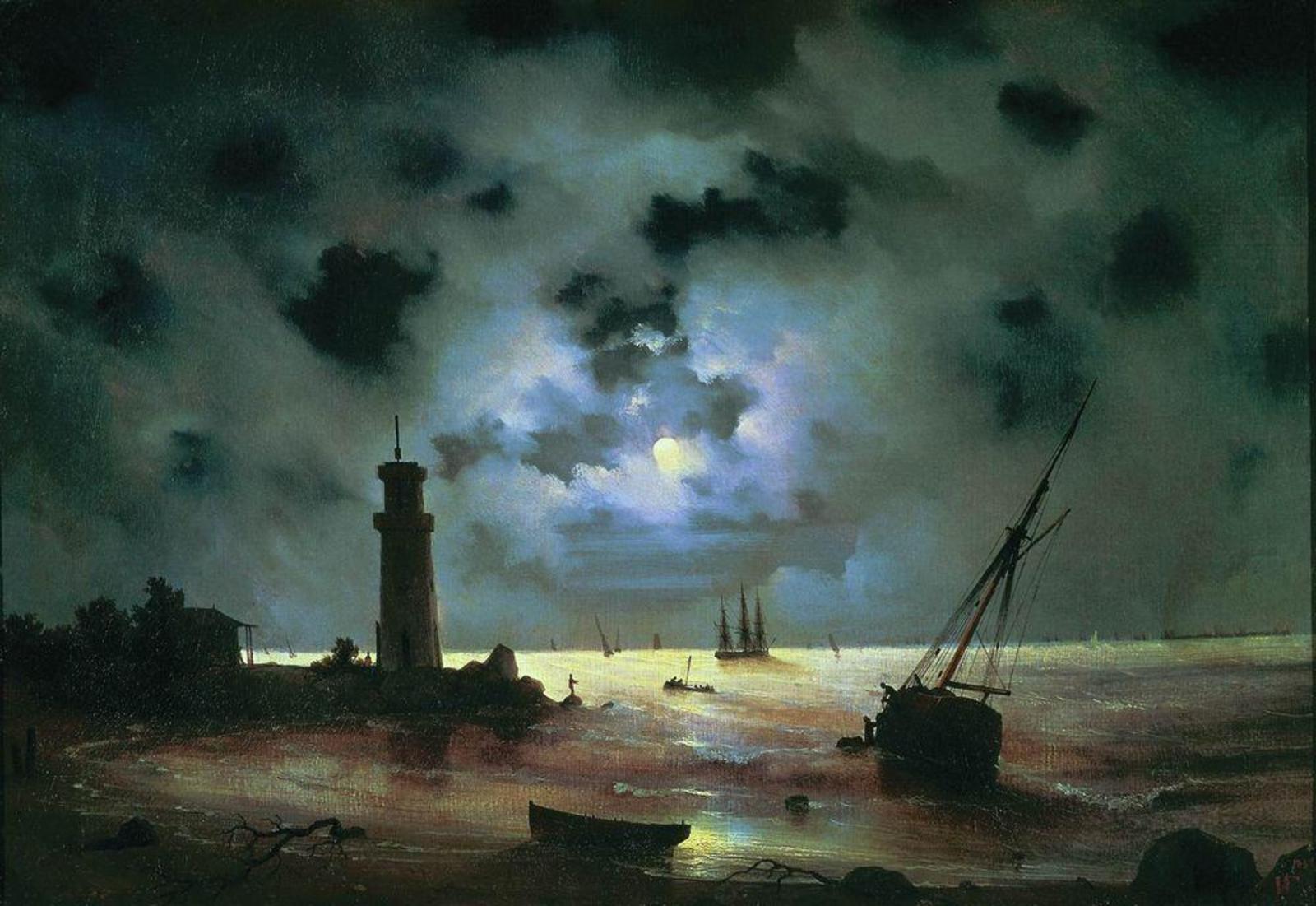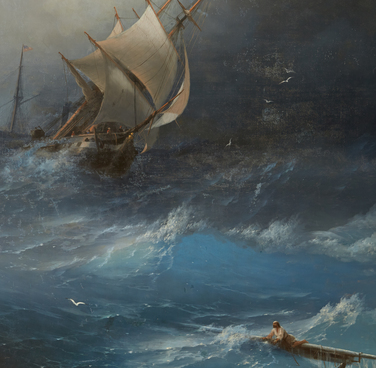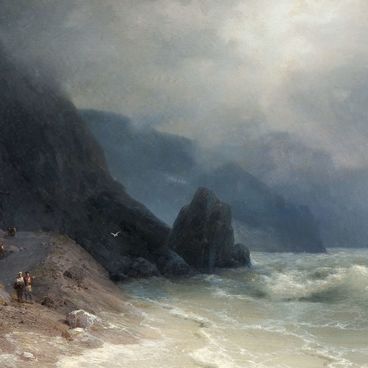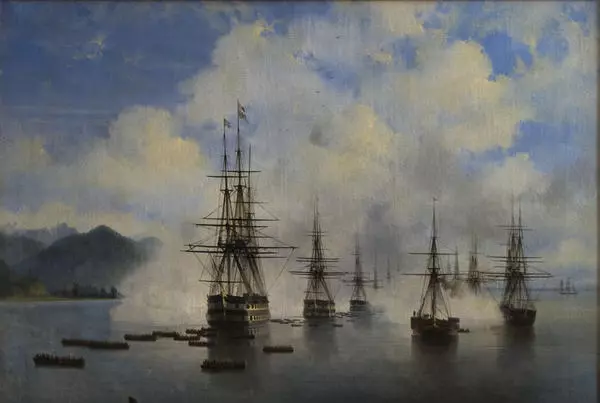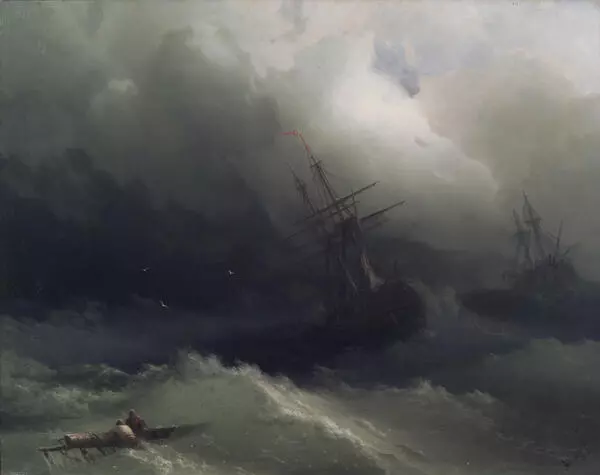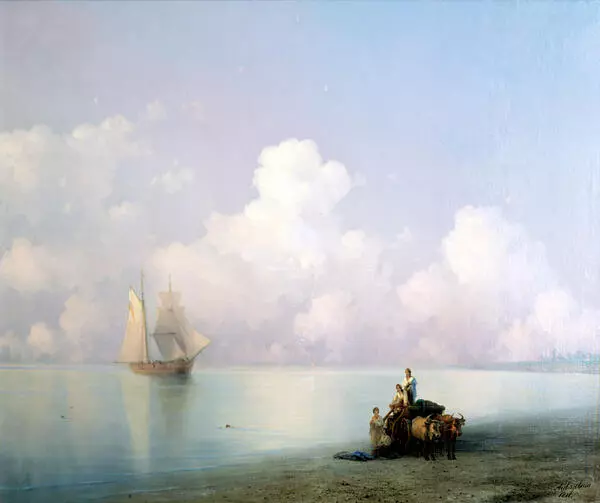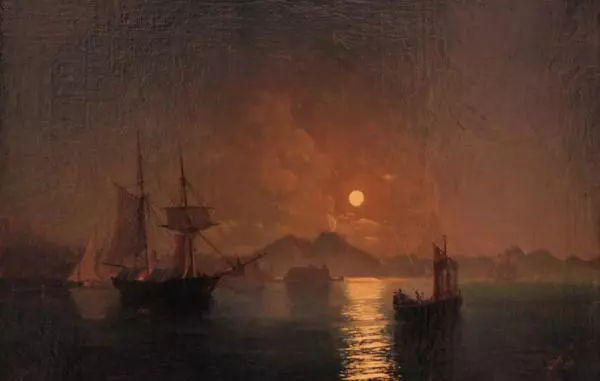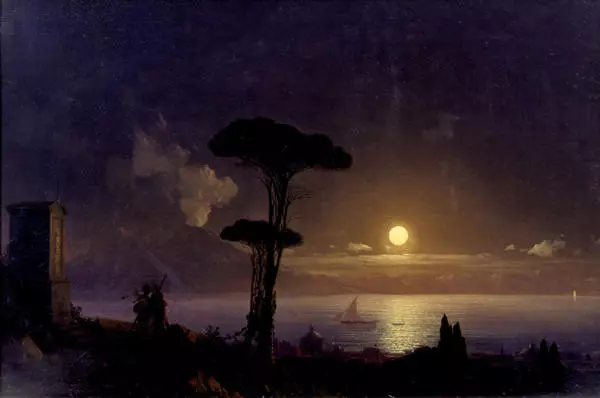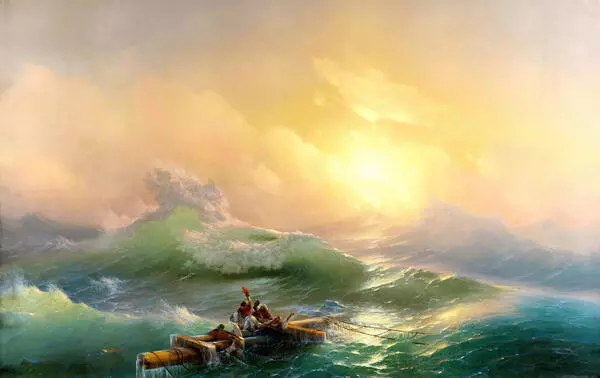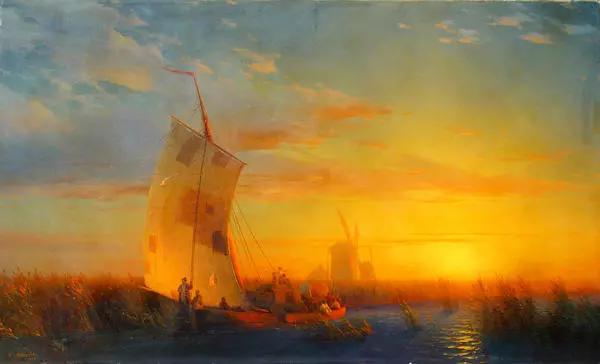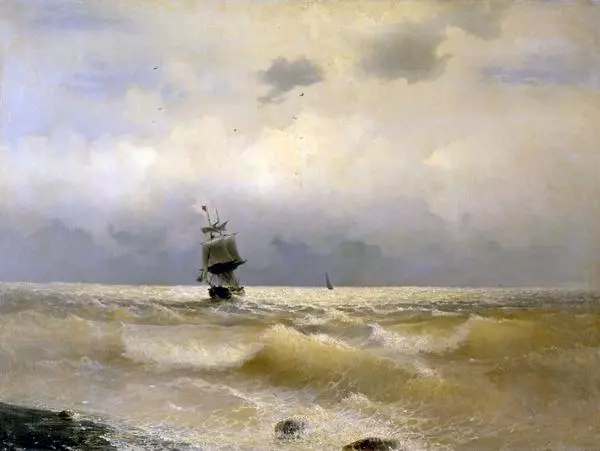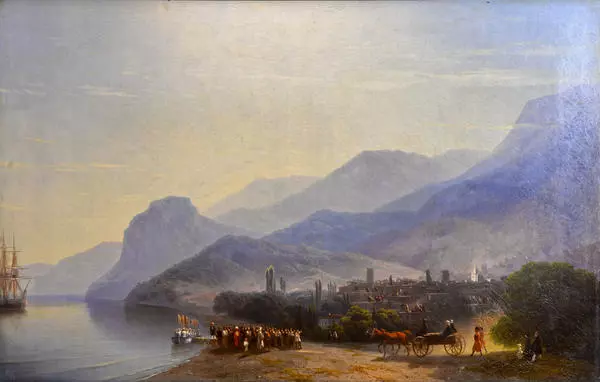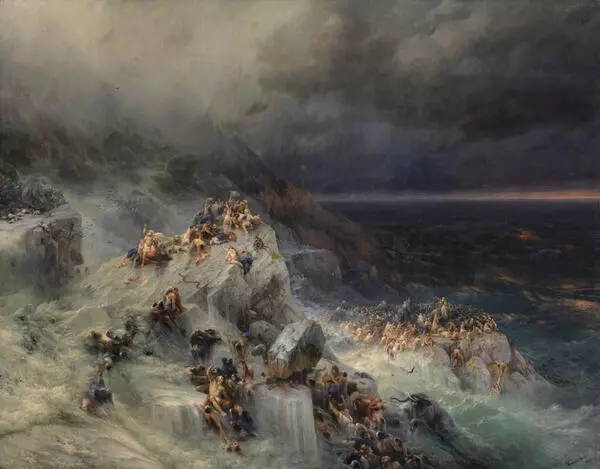Sea Shore at Night. Beside the Lighthouse is one of the earliest pieces by Ivan Aivazovsky held in the collection of the Gallery. He created this painting, when he was still a student of the Academy of Arts. Two years prior to that, he had his very first exhibition, which helped him to get the taste of fame: Aivazovsky received a silver medal for his painting Study of Air over Sea.
The period of studies in the Academy was the period of intensive quest of himself and his own unique way in art. To find his theme and to bring his talent to light, the artist worked a lot in the open air. For example, in 1836 Aivazovsky travelled along the Finnish Bay and brought numerous new pieces back home. Later the critics welcomed heartily those pieces. The next year featured even greater success: Aivazovsky received the Academy’s highest award — the Big Gold Medal. This allowed him to travel abroad to improve his skills.
In the Academy, the artist was a brilliant student, and early enough he demonstrated his talent as a seascape painter. During that period, he mainly was oriented towards the paintings of his teacher Maxim Vorobyov and artist Silvester Shchedrin. Specialists believe that Beside the Lighthouse in its artistic design is very close to the paintings of professor Vorobyov and is on a par with them with respect to the artist’s skill. Probably, because of that Aivazovsky was allowed to graduate early from the Academy, so he could continue to improve his skills independently – first in the Crimea, and then abroad.
The painting Beside the Lighthouse is on a par with the work of more mature artists. Despite being in his tender years, Aivazovsky already knew brilliantly how to build the composition and knew the rules of the perspective. Aivazovsky depicted the seashore by Kronstadt awaiting for the storm. We see the dark clouds darkening the sky. In masterly fashion, the artist conveyed the movement of the clouds. Such obvious skills of this very young author once provoked a conflict in the artistic circles. During the years of his studies, Aivazovsky was an apprentice of Philip Tanner, a French seascape painter, who stepped over the talent of his pupil and overloaded him with unskilled labour. Once, at an Academic exhibition of 1836, critics appraised paintings by Aivazovsky and awarded the silver medal to him, while pieces by Tanner, in their opinion, were excessively mannered.
The period of studies in the Academy was the period of intensive quest of himself and his own unique way in art. To find his theme and to bring his talent to light, the artist worked a lot in the open air. For example, in 1836 Aivazovsky travelled along the Finnish Bay and brought numerous new pieces back home. Later the critics welcomed heartily those pieces. The next year featured even greater success: Aivazovsky received the Academy’s highest award — the Big Gold Medal. This allowed him to travel abroad to improve his skills.
In the Academy, the artist was a brilliant student, and early enough he demonstrated his talent as a seascape painter. During that period, he mainly was oriented towards the paintings of his teacher Maxim Vorobyov and artist Silvester Shchedrin. Specialists believe that Beside the Lighthouse in its artistic design is very close to the paintings of professor Vorobyov and is on a par with them with respect to the artist’s skill. Probably, because of that Aivazovsky was allowed to graduate early from the Academy, so he could continue to improve his skills independently – first in the Crimea, and then abroad.
The painting Beside the Lighthouse is on a par with the work of more mature artists. Despite being in his tender years, Aivazovsky already knew brilliantly how to build the composition and knew the rules of the perspective. Aivazovsky depicted the seashore by Kronstadt awaiting for the storm. We see the dark clouds darkening the sky. In masterly fashion, the artist conveyed the movement of the clouds. Such obvious skills of this very young author once provoked a conflict in the artistic circles. During the years of his studies, Aivazovsky was an apprentice of Philip Tanner, a French seascape painter, who stepped over the talent of his pupil and overloaded him with unskilled labour. Once, at an Academic exhibition of 1836, critics appraised paintings by Aivazovsky and awarded the silver medal to him, while pieces by Tanner, in their opinion, were excessively mannered.

